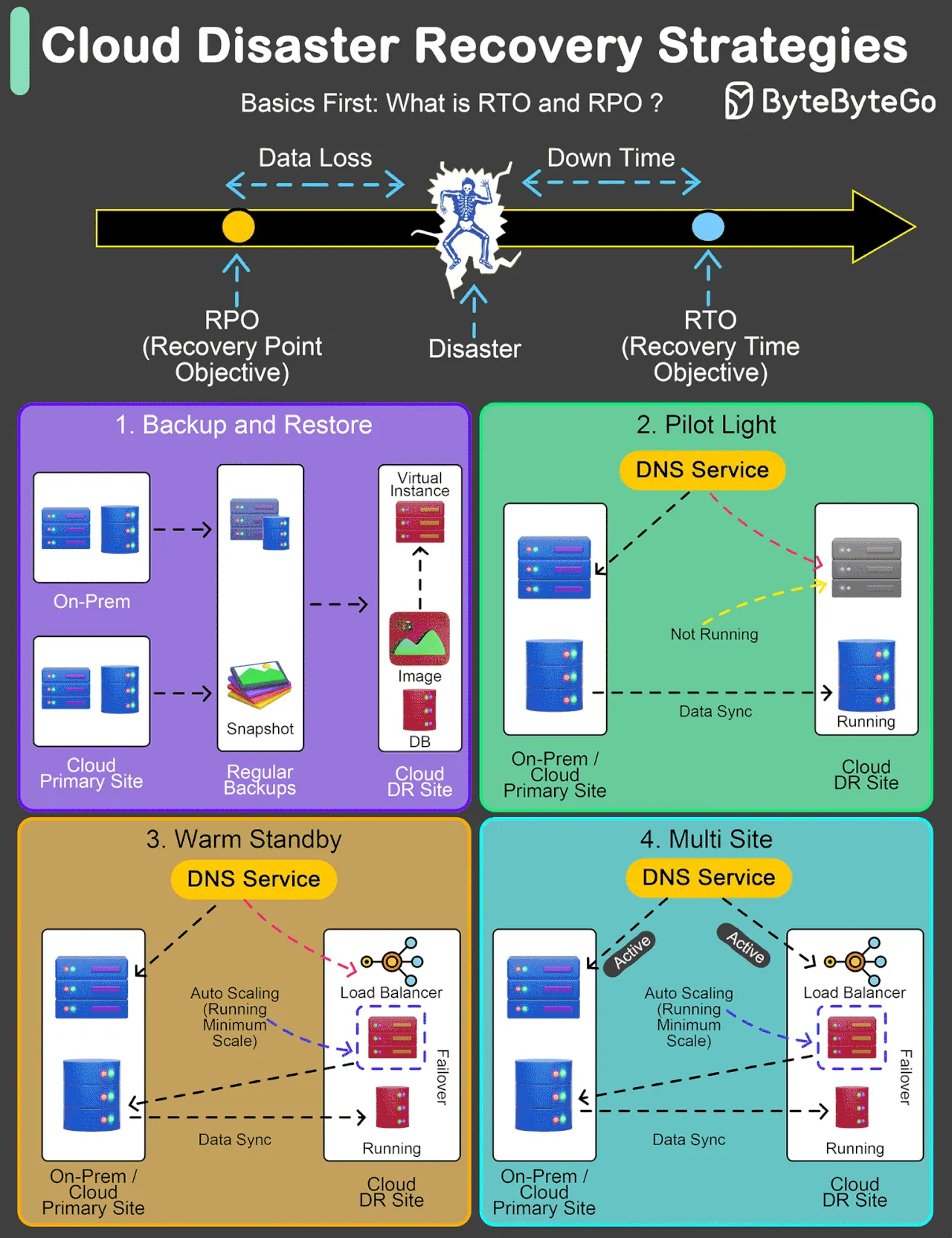Cloud Disaster Recovery Strategies
- The key to any robust DR strategy lies in understanding and setting two pivotal benchmarks: Recovery Time Objective (RTO) and Recovery Point Objective (RPO).
- Recovery Time Objective (RTO) refers to the maximum acceptable length of time that your application or network can be offline after a disaster.
Recovery Point Objective (RPO), on the other hand, indicates the maximum acceptable amount of data loss measured in time.
- Let’s explore four widely adopted DR strategies:
- Backup and Restore Strategy:
- This method involves regular backups of data and systems to facilitate post-disaster recovery.
- Typical RTO: From several hours to a few days.
- Typical RPO: From a few hours up to the time of the last successful backup.
- Pilot Light Approach:
- Maintains crucial components in a ready-to-activate mode, enabling rapid scaling in response to a disaster.
- Typical RTO: From a few minutes to several hours.
- Typical RPO: Depends on how often data is synchronized.
- Warm Standby Solution:
- Establishes a semi-active environment with current data to reduce recovery time.
- Typical RTO: Generally within a few minutes to hours.
- Typical RPO: Up to the last few minutes or hours.
- Hot Site / Multi-Site Configuration:
- Ensures a fully operational, duplicate environment that runs parallel to the primary system, enabling uninterrupted functionality.
- Typical RTO: Almost immediate, often just a few minutes.
- Typical RPO: Extremely minimal, usually only a few seconds old.
This post is licensed under CC BY 4.0 by the author.
